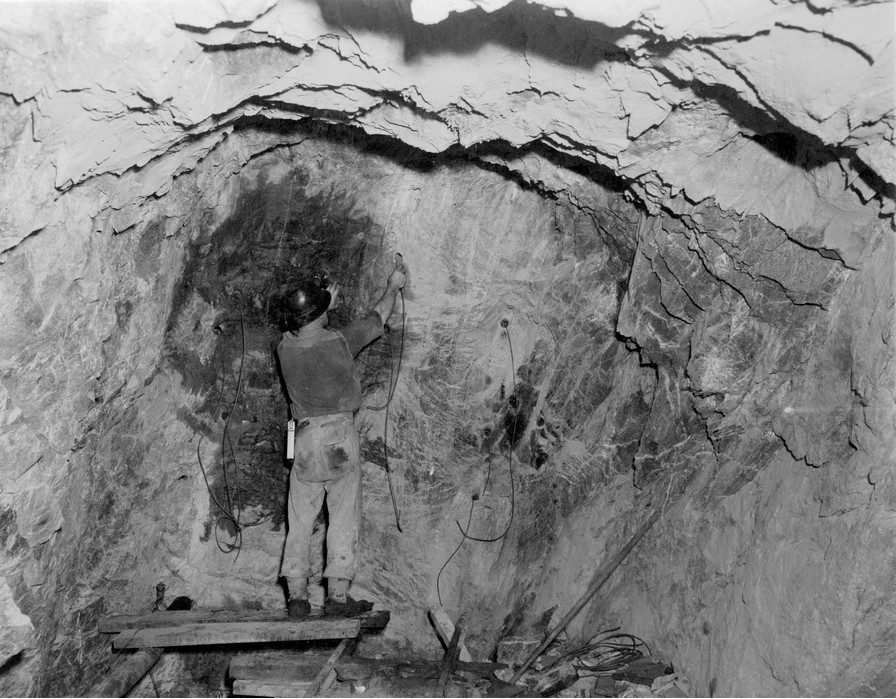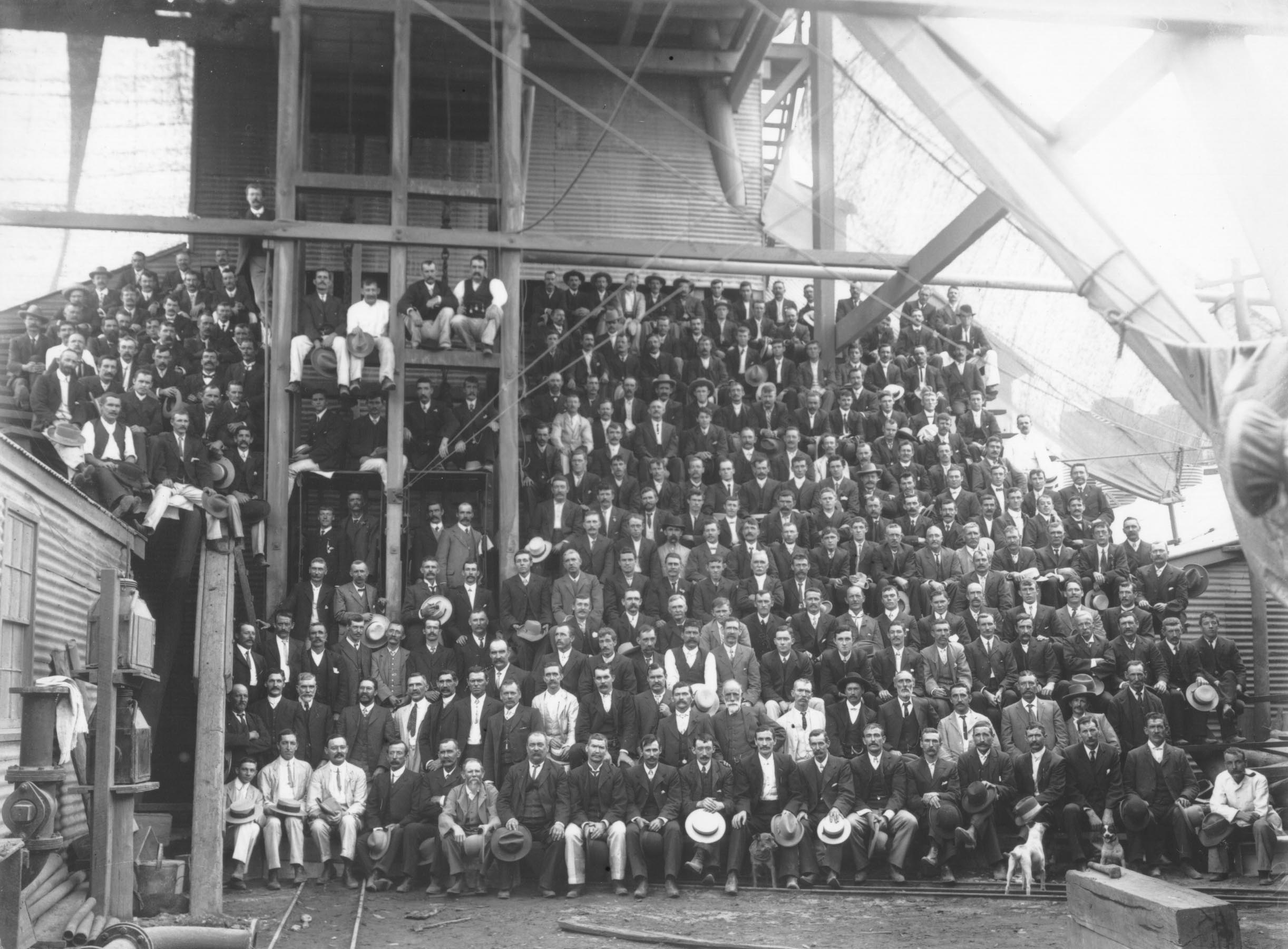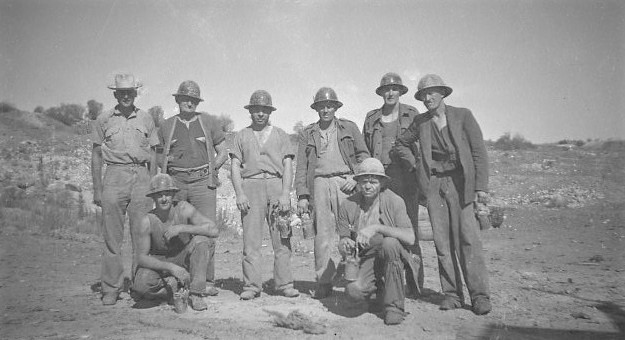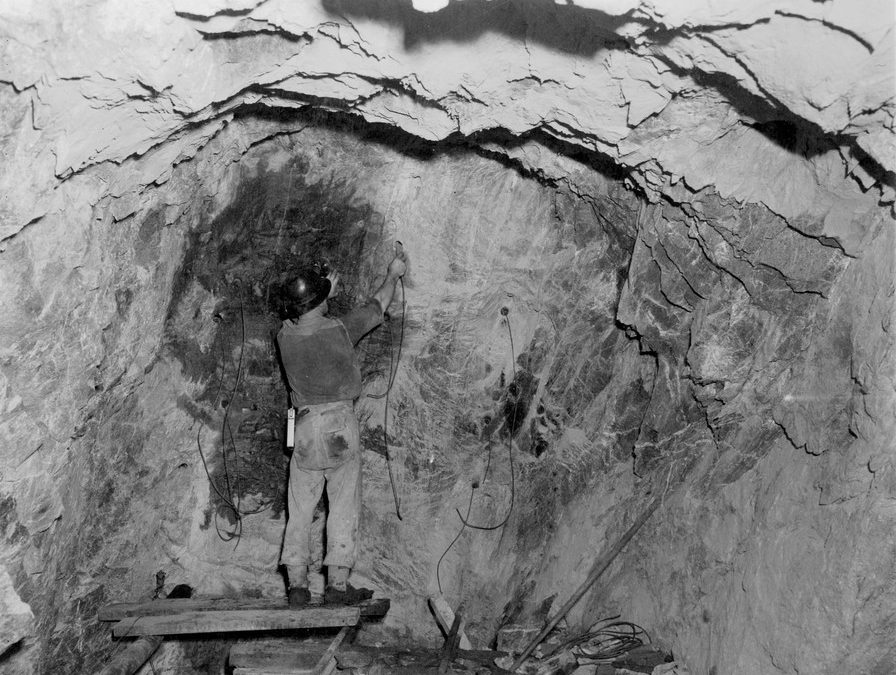From Mindat.org – All mines in the earlier years had their safety problems but some more so than others. The workers got to know which mines were more dangerous that others to work on and in Kalgoorlie-Boulder the Horseshoe or Golden Horseshoe had the worst reputation but second to this was the Chaffers. At the time these deaths were viewed largely as an accepted risk of the job and the manageing company which was the Lake View and Star were never held to be culpable.
The most remarkable thing about the Chaffers Gold Mine was its poor safety record.

Laying Charges at the Chaffers
The lease was at the far south-west corner of the Golden Mile, in an area in the early days called Six Mile. Boulder Main Reefs bordered the lease to the east, and the Golden Horseshoe lease was to the north.
Harry Buchanan and Albert Chaffer were school mates in the Eastern States. They left for Albany in 1893, then proceeded to York, where they obtained packhorses and supplies for the goldfields. They specked a fair amount of gold, then secured the lease. As it was Chaffer who travelled to Coolgardie to register the lease, it was subsequently known as Chaffers.
The pair also had an interest in the Morning Star lease with Bob Hair and Jim Pender. They sold Chaffers to well known mining identity Doolette, who floated the mine in London. Harry’s brother Douglas joined them at the Jubilee mine, which they later sold, and Chaffer left the goldfields for good. Brothers Harry, Douglas and Allan Buchanan continued mining on the Boomerang, Woomera, Brown Hill Consols and the Golden Group on the east side of the Golden Mile. When these were sold, Harry left for Papua New Guinea.
The Chaffers Gold Mining Company Limited was floated in London, and proceeded to develop the mine from 1899. An independent expert was called in to inspect the mine. He raved about the mine, subsequently published in the London Financial Times. Shares in the company skyrocketed. Then it was found gold values were poorer than expected, leading to a flood of complaint letters into English papers. The company took over neighboring Boulder Main Reefs lease in 1909. The Chaffers company paid out the 7000 pound debt to creditors the Boulder Main Reef Company owed. Part of the Chaffers mill collapsed the same year, and the company purchased another second hand mill to replace it.

Miners of the Lake View and Star
The company had been through several reconstructions. The last was in 1913, but by the following year it had closed. The company was seriously in debt, and creditors moved to wind up the concern. The company was forced into liquidation, the plant sold to the Western Machinery Corporation, with the Lake View and Star Company purchasing the lease in 1915.
Lake View and Star began reconditioning the old three compartment main shaft on Chaffers late 1920’s, and development work continued into the 1930’s. A new treatment plant capable of processing 40 000 tonnes of ore per month was erected on the Chaffers lease in 1932. A re-treatment plant was constructed in 1940, to process the residue dumps for the Chaffers and Lake View mines. Two old tanks used as water reservoirs at the Old Kalgoorlie Baths, Brookman St, for 30 years, was purchased from the Kalgoorlie Council and transported to the mine for this purpose.
Space here only allows us to deal with deaths at the Chaffers mine rather than all the men injured. These deaths were viewed largely at the time, as just one of the hazards with mining. The original company , and Lake View and Star were never held to account.
Joseph Chaffers was underground manager at the Boulder Main Reef mine controlled by the Chaffers company. Albert Sargent died (1904) when the cables holding the cage snapped. The police discovered the cables were badly corroded. Chaffers was fined for breaking the Mines Regulations Act. The later case of manslaughter was thrown out of court, as a person could not be found guilty more than once. It is unclear if Joseph was related to Albert Chaffers who was the original prospector of neighboring Chaffers Gold Mine.
Ambrose Marshall Bray was crushed to death (1909) between the cage and cap piece of the plat. He was originally from Kadina in South Australia, and was due to be married in a few days.
Ebenizer Sanders hand was badly crushed in the roaster of the Chaffers mill in 1930. The hand was amputated, but an infection set in and he died. The coroner decided an inquest was not needed.
The same year, Thomas Urquhart (44) was killed when ore struck him from an explosion. Robert Phillips was injured from the same incident.
Noel Thomas Mulholland (40) was struck by falling pipes in the shaft in 1931, and had his leg amputated. He subsequently died in hospital.
Albert James Head (34) a trucker at the mine in 1933, was blown to pieces when explosives were set off as he was passing. It appears the process was to set off charges in various spots, by separate groups of men. After setting the timer, the miners would move to the next group and pass to an area of safety. When the second group heard the explosion, they would set the timer on their explosives, and so on. But there was no process to verify if all men had been accounted for. The second group were told some men were arriving, some passed by, and they just assumed there were no more. Louis or Lonigi Bonandrini and Guisippi Omacini who had set the charges which killed Head were arrested for manslaughter. The company was viewed as blameless.
Frank Gardner (26) and Dominic Regan (45) also died from an explosion in 1934. Gardner had been married a fortnight.
William John Reed (47) fell to the bottom of the shaft, after being dragged from the cage in 1935. The cage also contained poles and other drilling gear. The poles slipped and wedged into the side of the shaft, causing the cage to ip. One other miner in the cage was injured, and two escaped without injuries. The same year, Alexander Berry Thomson (30) died when he fell out of a bucket in the shaft, while being hauled up.

Milan Ciganovich fell 100 feet down the shaft in 1938. The inquest blamed Milan for his own death. Walter Hunter (18), died from a broken neck December 28 1940, when he was jammed between the pulley and conveyor belt in the Chaffers mill. The jury suggested better guarding could be installed, but the death was accidental with no-one to blame.




